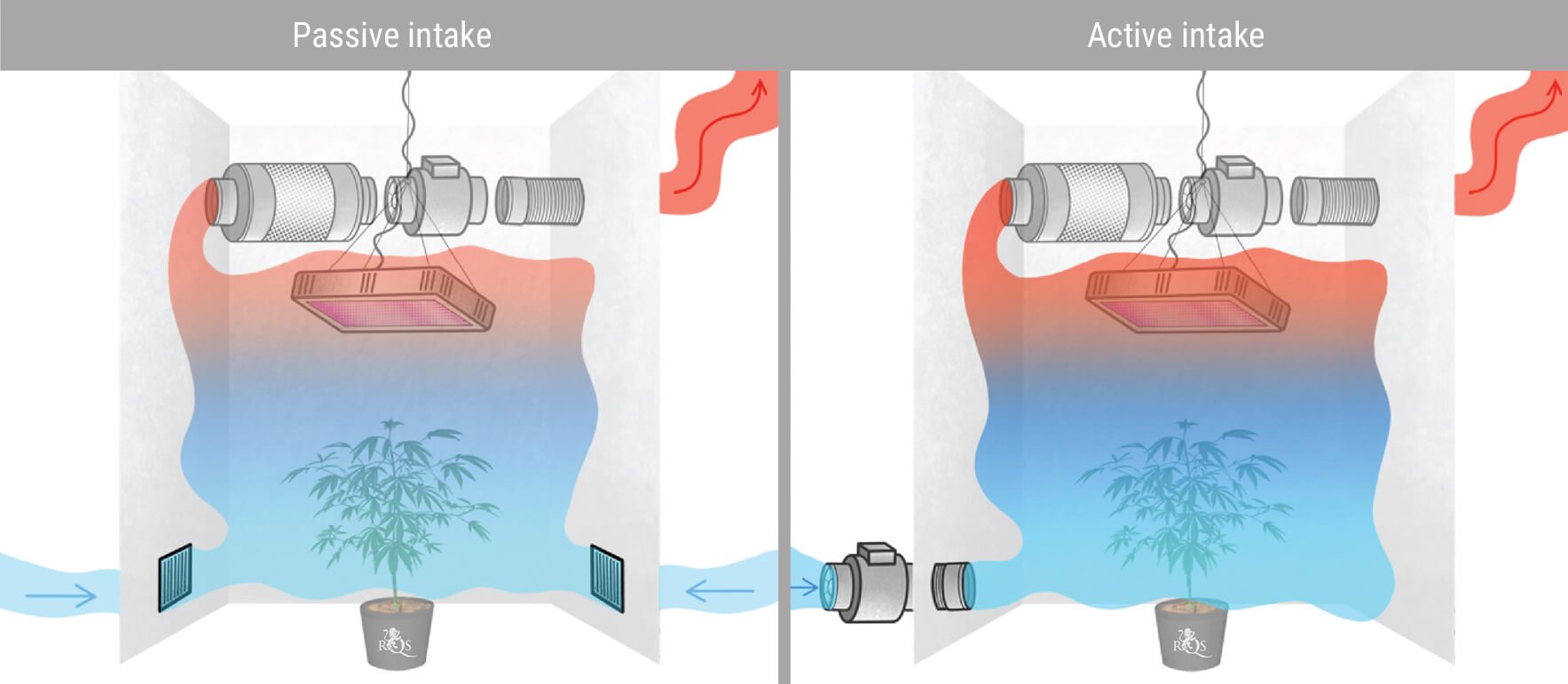An important, and sometimes overlooked, part of indoor gardening is proper ventilation. Even with the best nutrients, perfect feeding schedules, and sufficient lighting, your plants will suffer without adequate air flow. But a few simple solutions will help get you back on track. To save you money and hassle, we’ll start simple, and move on to more complex solutions.
Hazards of Poor Ventilation
In an enclosed space like a grow tent, air will not naturally move throughout the space. This can cause humidity to build up resulting in mold, powdery mildew, or fungal growth on your plants. Stagnant air can result in low carbon dioxide levels supplied to the leaves, which will slow and even stunt growth. And without wind to build resistance, the plants’ stems will be weak and unable to hold themselves up. Depending on the size of your space, and the number of plants, improving airflow could be as easy as adding a 6” clip-fan.

Oscillating Fans
To keep air moving within the space and help regulate temperature, an oscillating fan is recommended. For a small space, such as a tent up to 2’ x 2’ one 6” clip-on fan may be sufficient. In a 3’ x 3’ space, multiple clip fans may work. However, if you are working with a larger space or a dense planting, you’ll need to look at stand up or hanging fans to keep air moving. While pedestal or tower fans take up more space they are also more powerful, and tend to be more cost efficient than clip-on fans. Directing your oscillating fans at the leaves insures air will circulate both above and below the canopy layer. If your fan is not oscillating, do not point it directly at the leaves or you may get wind burn.
Inline Fans
Plants take in carbon dioxide during photosynthesis, in a sealed environment, that co2 can't be replaced. Used with or without ducting, inline fans move air into or out of the grow environment. Classic inline fans can be loud, so a muffler or silencer can be added to decrease the sound output. There are also sound-muffling versions of most fans, but they may not be as effective. For most small spaces and tents a 4” or 6” diameter will be sufficient. For larger spaces 8”, 10”, or 12” fans are available. Larger sizes typically have a higher CFM (Cubic Feet per Minute).

CO2 Emitters
In most instances, with proper ventilation, CO2 supplementation is not necessary. If you are in a space where proper ventilation would be difficult, OR if you are using intense lighting through a flowering phase, CO2 supplementation may help. Growing mushrooms, using CO2 tanks or bags, or installing CO2 emitters are the most common options. What works will depend on the size of your space, your budget, and the time and effort you're willing to put in.
Carbon Filters
Carbon filters remove 95% of odors and large particulates from the air in your grow space, such as smoke, fumes, and chemicals like fertilizers and pesticides. They can be used as a standalone, or attached to an outgoing inline fan. Pre-filters go on the outside of the carbon filter to keep large particulates from entering your ventilation, and can be replaced more often. Attaching a filter to your fan may also affect how your fan operates, and a higher power fan may be required.
Source: https://hydrobuilder.com/wp/wp-content/uploads/Ventilation-Setup-Guide.jpg
HEPA Filters
Attaching a HEPA (high-efficiency particulate air) filter to a fan that draws air into your grow space will eliminate 99.97% of mold spores, bacteria, dust mites, pollen and other small particulates before they come into contact with your plants. Attaching a filter may affect how your fan operates, and a higher power fan may be required.

Additional Considerations
When using an incoming and outgoing inline fan system, be sure that they are not attached to each other, or your air will not circulate in your tent. Ducting won’t be necessary in every situation, it’s just a way to get the air from where it's easiest to hang your fan, to the vents of your grow space. Fan speed controllers allow you to optimize your fan’s output for your space. Proper ventilation will help you achieve your optimum VPD and maximize your plants' growth potential.
Adequate ventilation can make or break your grow, don’t wait until it's too late. Comment below, contact us here, or stop by Taproot Hydroponics and we’ll help you make your garden a success!







